Learn how to make lemon scones from scratch with my simple and easy recipe and tutorial!

Okay y’all (yeah, I’m pulling out the y’all). If you’re looking for a lovely breakfast treat or afternoon dessert, these lemon scones are just 👏 the 👏 ticket 👏.
They’re soft and tender, but they also have that bright, zesty lemon flavor to keep your taste buds singing!
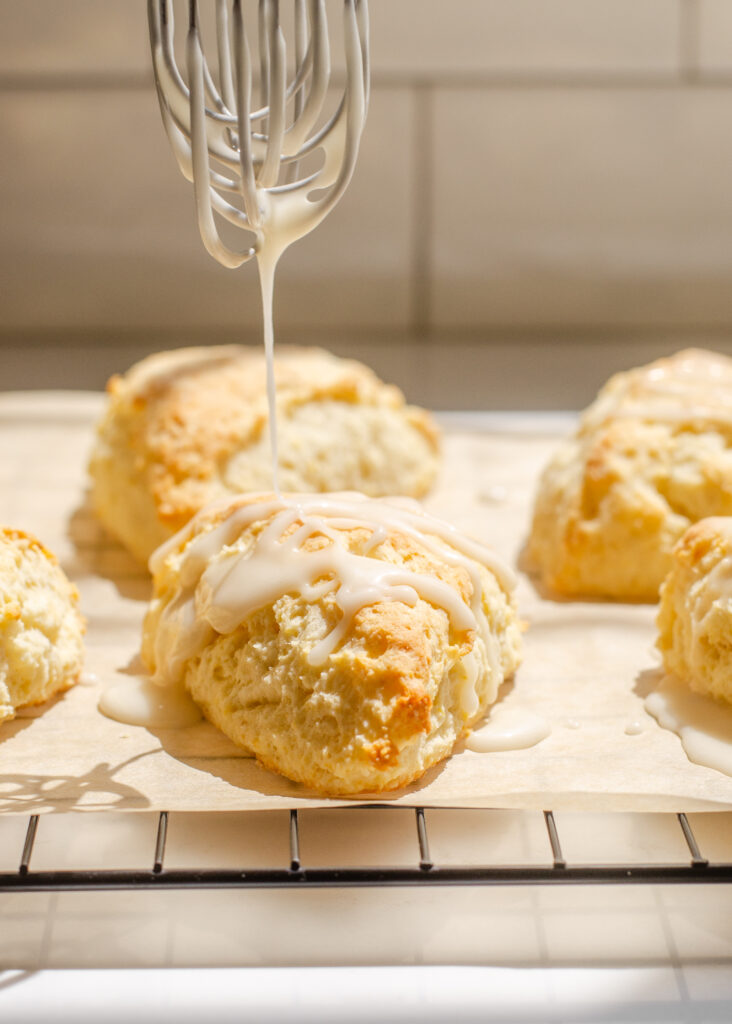
And they’re surprisingly easy to make. With my simple-but-scrumptious recipe, you’ll feel like you’ve transformed your kitchen into a bakery or coffee shop in no time.
Okay, let’s dive in and I’ll show you how to make lemon scones from scratch!
Here’s a video tutorial in case you learn better that way. The written tutorial and printable recipe are below!
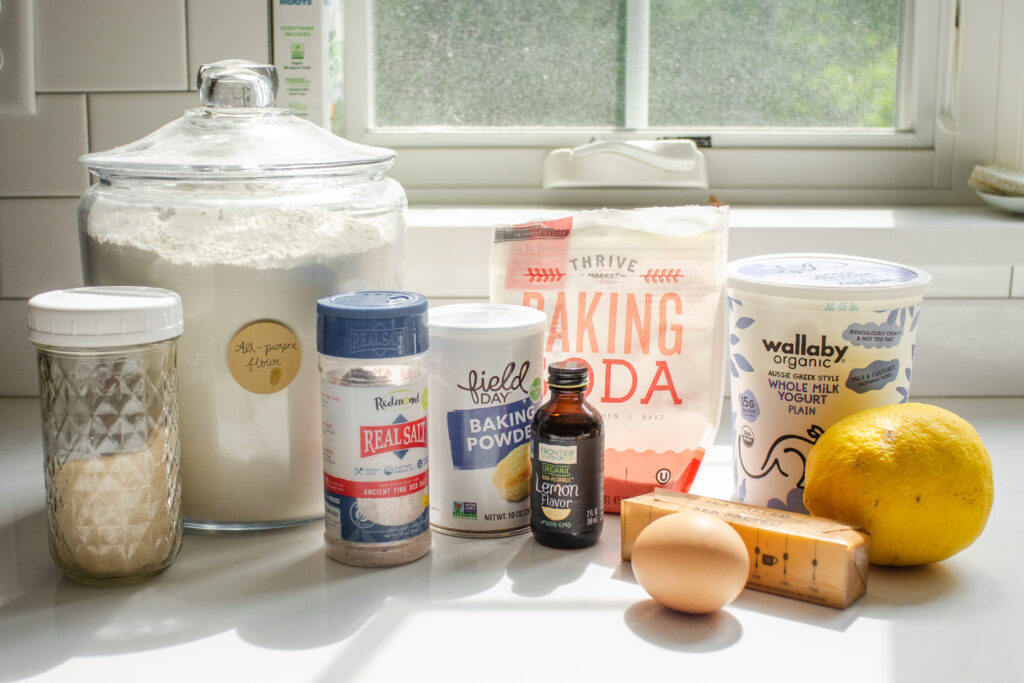
NOTE: Some links are affiliate. All opinions are 100% my own. If you click a link and make a purchase, I will earn a small commission. This has zero impact on the price you pay, and it helps Buttered Side Up out! Thank you!
Ingredients:
- All-Purpose Flour: I like to use organic all purpose flour, but whatever you have on hand will work as well!
- Baking Powder: Field Day is my current favorite brand of baking powder.
- Baking Soda: Since there are some acidic ingredients in the recipe, the baking soda can react with them and help to raise the scone dough.
- Salt: I use unrefined sea salt, so if you use regular table salt you might want to reduce the amount slightly. This is because unrefined sea salt contains less sodium than “regular” salt.
- Fresh Lemon Zest: You’ll want about 1 tablespoon of lemon zest. But if your lemon yields more than 1 tablespoon, you can go ahead and throw the rest in! Make sure to save the lemon juice for the glaze!
- Very Cold Butter: Confession: I have used both salted and unsalted butter here, and I can’t tell much of a difference. I usually go for salted since that’s what I have on hand. Sue me.
- Egg: I like to choose organic and/or pastured eggs when possible, but a “regular” egg will work just fine! Just make sure it’s large!
- Greek Yogurt: I like to use full fat Greek yogurt here. I have used fat-free Greek yogurt and added a bit of heavy cream to increase the fat content. In a pinch you could substitute all cream for yogurt, but you’ll want to reduce the amount a bit since cream is thinner than Greek yogurt.
- Sugar or Maple Syrup: You can use cane sugar, coconut sugar, Sucanat, maple syrup, etc. If you opt for a liquid sweetener like maple syrup, you may need to add a touch more flour. And if you use a “dry” sweetener, you may need to add more yogurt or a bit of cold cream to get the dough to the proper consistency.
- Lemon Extract (Optional): The lemon extract (sometimes called lemon flavoring) is optional in the scone dough, but I highly recommend NOT skipping it in the glaze (I’ll talk about that more below). I haven’t personally tried it, but you could experiment with substituting vanilla extract.
How to Make Lemon Scones:
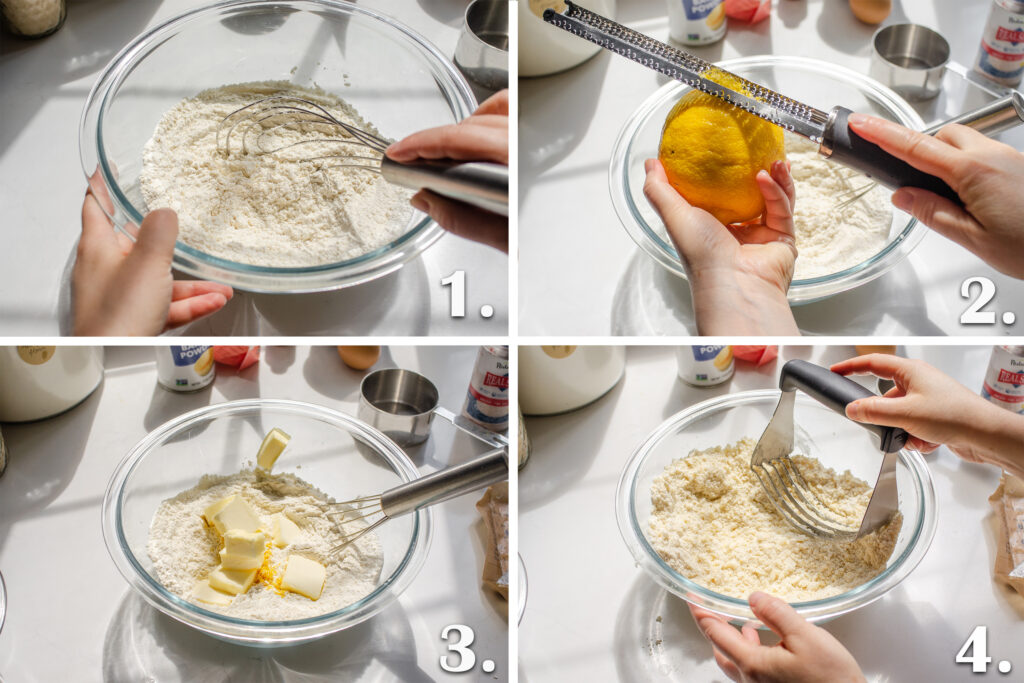
Okay, let’s go over the steps for making these scrumptious scones (excuse my alliteration).
Before you do anything else, heat oven to 425 degree Fahrenheit (218 degree Celsius).
Mixing the Dough:
Begin by whisking together the dry ingredients in a medium large mixing bowl.
Add the lemon zest and cold butter pieces and toss to coat in the flour.
Using a pastry blender (AKA pastry cutter), fork, or your fingertips, cut the butter into the flour mixture. Continue until the mixture looks like coarse crumbs or wet sand. You don’t want there to be any butter pieces that are larger than the size of a pea.
The more you cut the butter into the flour, the wetter the dough will be.
You can also use a food processor for this job if you have one (and feel like dragging it out).
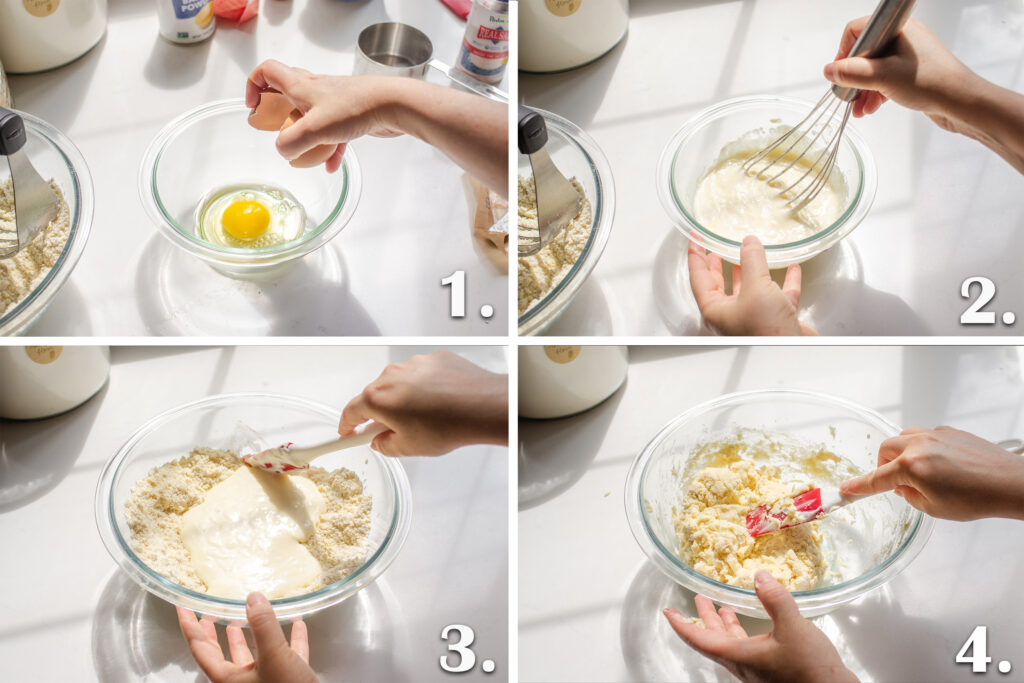
In a separate small bowl, lightly beat the egg. Then add the yogurt, sweetener, and lemon flavoring. Whisk until well combined.
Pour the wet ingredients into the dry ingredients, and gently mix with a spatula until everything is moistened and a shaggy dough forms.
For the softest scones (again with the alliteration), you want the dough to be somewhat sticky, but still able to form a cohesive dough.
Add more flour or yogurt to achieve the right consistency.
This is a little different from a classic scone dough.
The secret to tender scones is twofold:
- Get the dough consistency right: not too dry and stiff!
- Don’t over-mix or handle the dough.
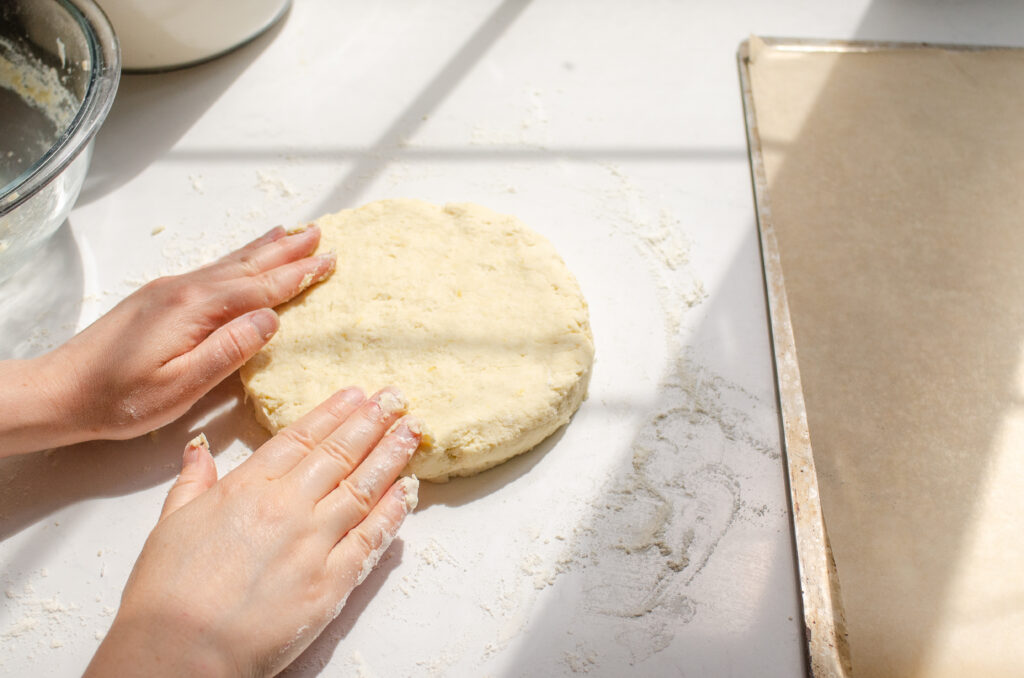
Forming the Scones:
Line a baking sheet with parchment paper.
Transfer dough onto a lightly floured surface.
Pat the dough out into a rectangle, then fold the dough into thirds. This helps to create flaky layers.
Gently pat the dough out once more, and fold into thirds.
Finally, pat the dough out into a disc.
Watch the video if this process confuses you!
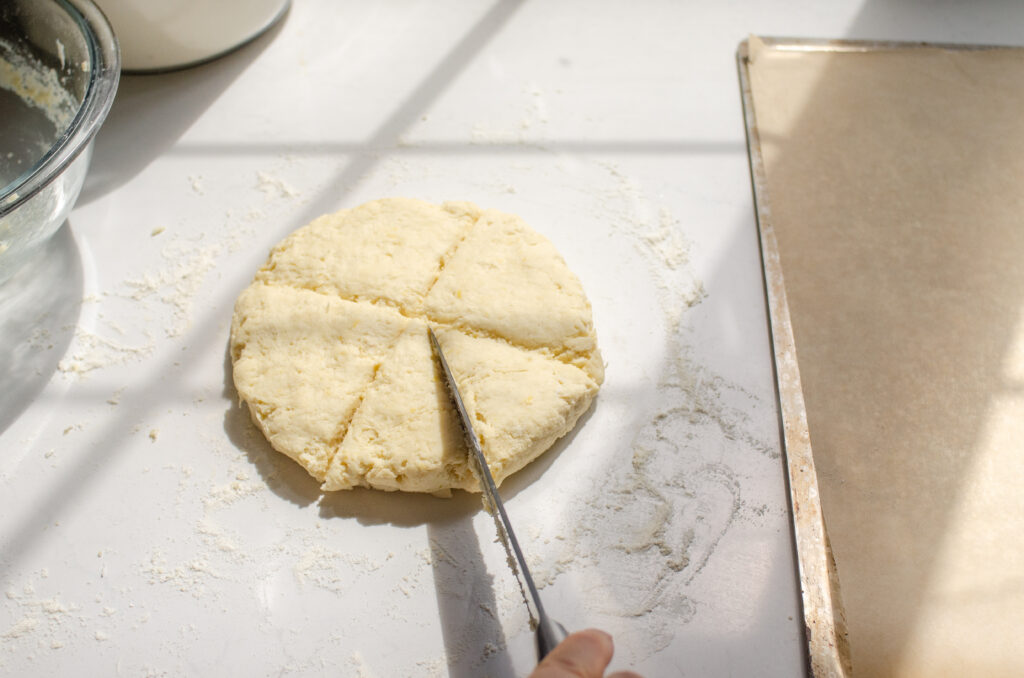
Cut the dough into 8 triangles. You can use a bench scraper or sharp knife for this.
Now, you can also form the scones the way I did for my Blueberry Scone recipe if that’s easier for you.
I experimented with spreading the dough with 1/4 cup of lemon curd, and then rolling it up jelly-roll style as shown in the above post.
It was lovely, but I did have issues with the lemon curd spilling out the edges of the scones.
Or you could use a round cutter, biscuit cutter, or cookie cutter if you prefer a different shape of scones.
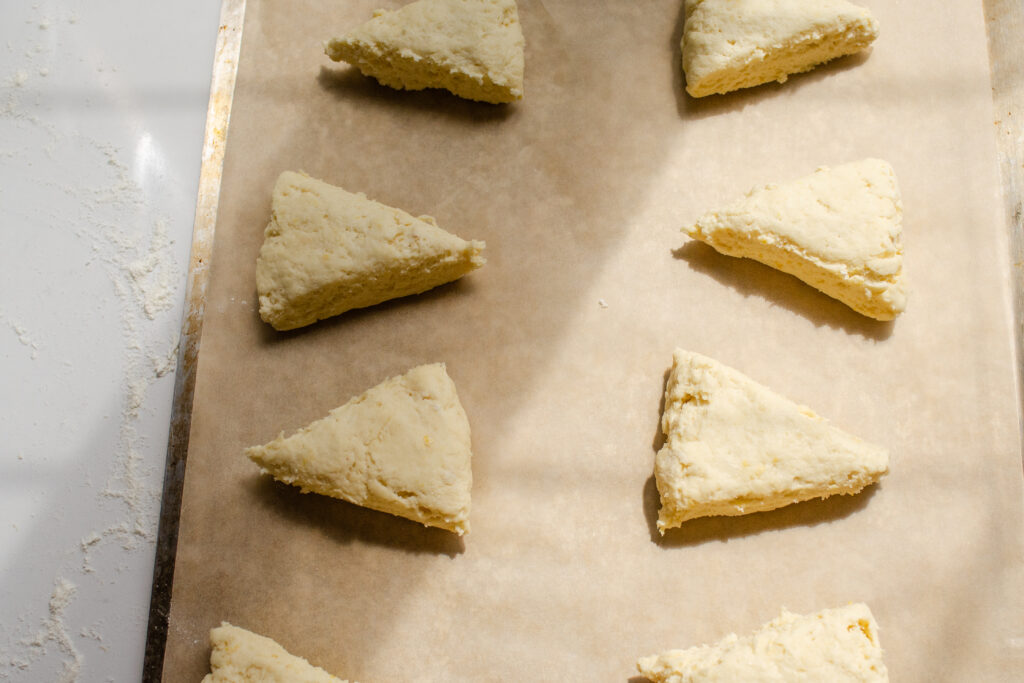
Place the scones on the prepared baking sheet. I love my all-clad baking sheet, but another heavy-duty baking sheet will work as well.
You want to space the scones at least 2 inches apart. They tend to spread out in the oven. So unless you want your scones to squish together, make sure to space them out!
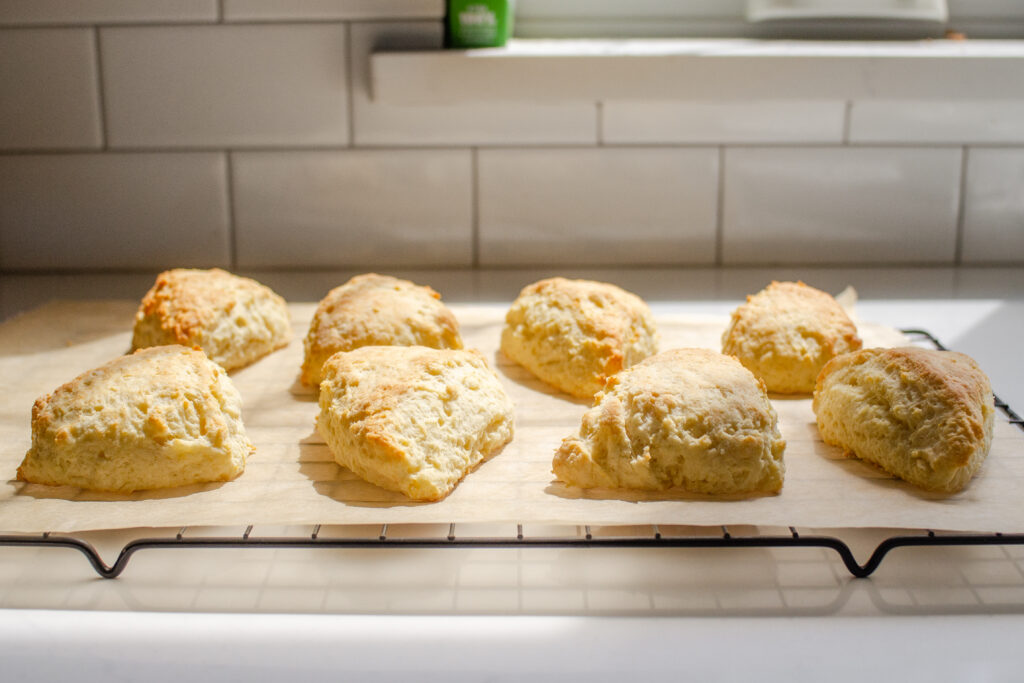
Baking:
Bake the scones in your preheated oven. Make sure to place the oven rack in the middle position!
Bake until golden brown, about 12-14 minutes.
This is a soft dough, so you want to ensure that the scones get baked all the way through. On the other hand, you don’t want to over-bake them and dry them out!
To me, the perfect scone is a soft and fluffy scone, NOT a dry and tough one.
After the scones are done baking, transfer them, parchment paper and all, to a wire cooling rack.
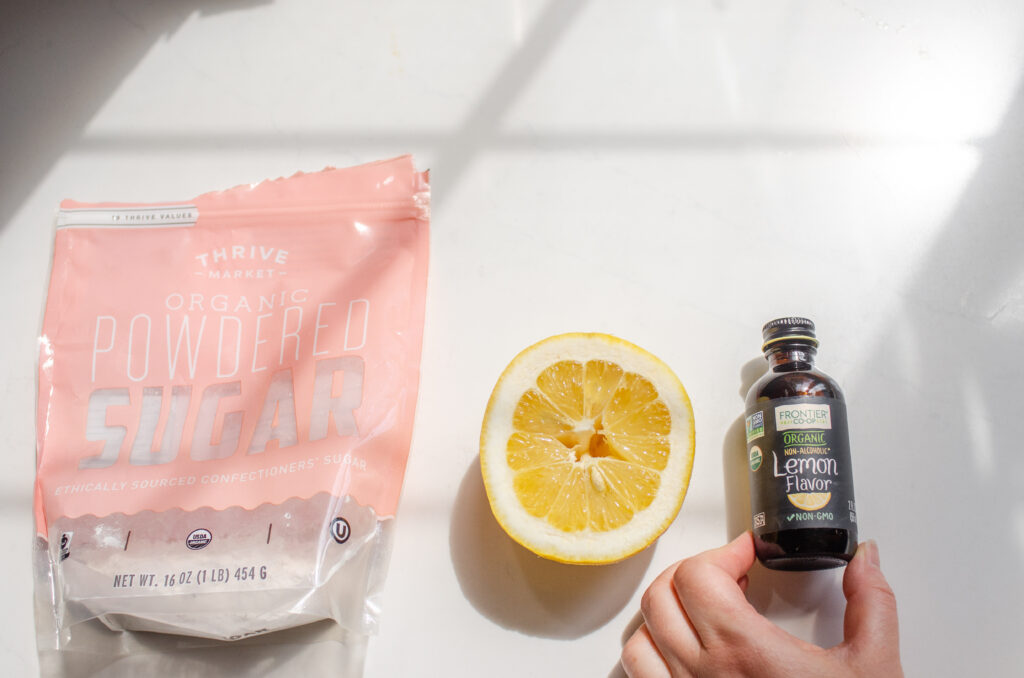
Making the Simple Lemon Glaze:
For the sweet lemon glaze, here are the ingredients you’ll need:
- Powdered Sugar
- Fresh Lemon Juice
- Lemon Flavoring
The lemon flavoring is sort of optional, but not really. I’m not kidding when I say it takes these scones to the next level.
I really like the Frontier organic lemon flavoring (available on Amazon).
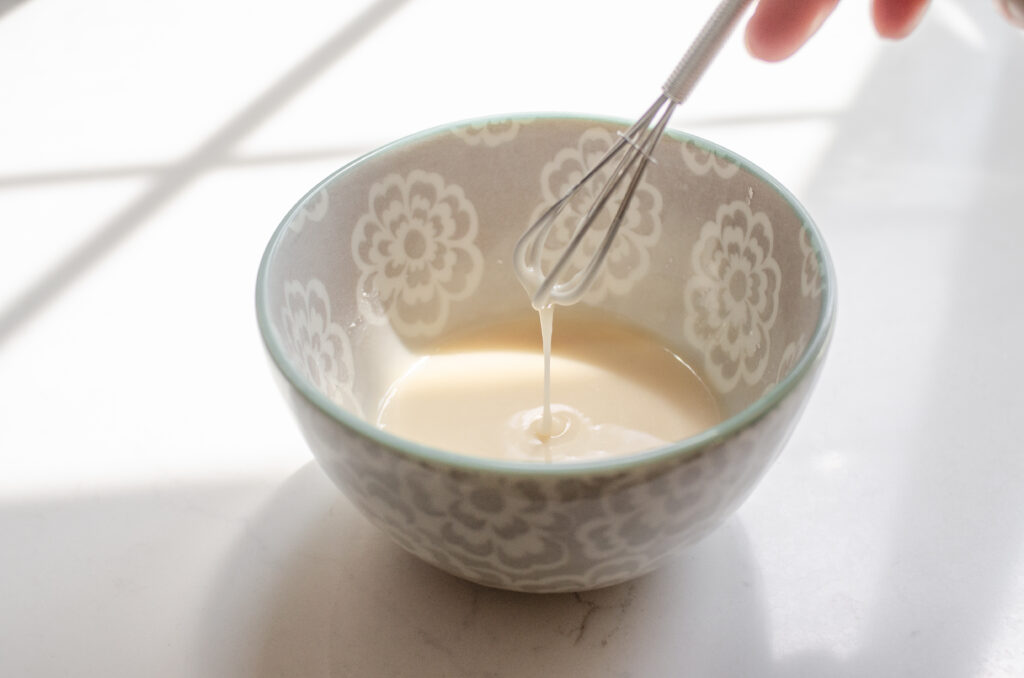
Whisk together all of the ingredients in a small bowl until completely smooth.
You may need to add more powdered sugar or lemon juice to achieve the proper consistency.
You want to the glaze to be thin enough to drizzle, but not so thin that it runs right off of the scones.
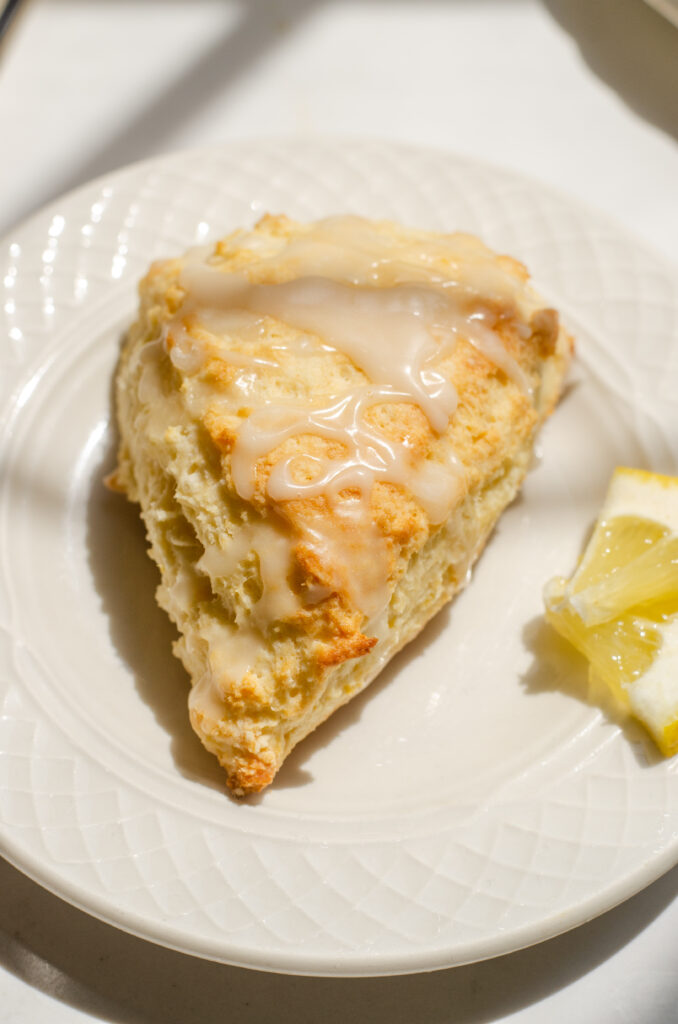
Now drizzle that glaze all over the tops of the scones.
Goodness, isn’t that just fabulous?!
You can also sprinkle a bit of extra lemon zest on top.
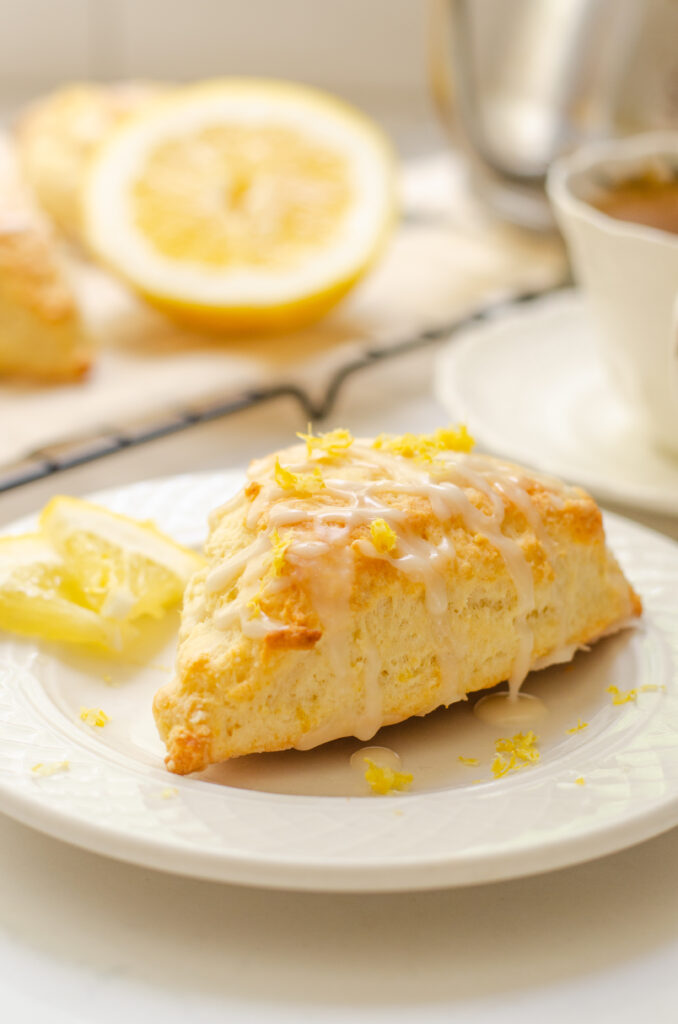
Serving:
I love to serve these with a swipe of grass-fed butter.
You could also opt for Devonshire Cream for a more British flare. Mock Devonshire Cream is also delicious.
Or, to really up the lemon flavor, serve with a dollop of lemon curd!
Add a few fresh blueberries to the side for a lemon blueberry vibe, or other fresh fruits such as strawberries or raspberries.
And *of course* you must serve these with your favorite cup of tea!!
Storing:
These scones can be stored in an airtight container at room temperature for up to 1-2 days, or in the refrigerator for up to 5 days.
You could also place the unglazed scones in a freezer bag and freeze for up to a month. Then thaw and glaze.
However, these really are best served fresh.
More Lemon Recipes:
More Biscuit and Scones Recipes:
Recipe Card:
Easy Lemon Scones Recipe

Learn how to make some scrumptious lemon scones with just a few simple ingredients!
Ingredients
For the Scones:
- 1 1/2 cups (214 grams) all-purpose flour
- 1 tablespoon baking powder
- 1/4 teaspoon baking soda
- 1/2 teaspoon unrefined sea salt
- 1 tablespoon fresh lemon zest
- 6 tablespoons cold butter, cut into smaller pieces
- 1 large egg
- 3 tablespoons of cane sugar or maple syrup
- 1/2 cup full-fat Greek yogurt (see note)
- 1 teaspoon lemon flavoring, optional
For the Glaze:
- 6 tablespoons powdered sugar
- 1 tablespoon lemon juice
- 3/8 teaspoon lemon flavoring
Instructions
For the Scones:
- Preheat oven to 425 degrees F (218 degrees Celsius). Set the oven rack to the middle position. Line a baking sheet with parchment paper and set aside.
- In a medium large bowl, whisk together the flour, baking powder, baking soda, and salt. Add the lemon zest and butter pieces and toss to coat.
- Using a pastry blender, cut the butter into the flour mixture. You want to cut it in really well, and ensure that there are no butter pieces larger than a pea. It should look like coarse crumbs.
- In a separate small bowl, lightly beat the egg. Add the sugar, yogurt, and lemon flavoring (if using). Whisk until smooth.
- Add the wet ingredients to the dry ingredients and mix with a spatula just until the dough comes together. Do not over mix! You want the dough to me somewhat sticky, but not overly wet.
- Transfer the dough to a lightly floured work surface. Pat the dough out into a rectangle, then fold the dough into thirds. This helps to create flaky layers. Gently pat the dough out once more, and fold into thirds. Finally, pat the dough out into a disc.
- Cut the dough into 8 even triangles. Transfer to the prepared baking sheet, leaving at least 2 inches between each scone.
- Bake in preheated oven for 12-14 minutes, or until golden brown.
- Transfer the scones, parchment paper and all, to a wire cooling rack to cool slightly before glazing.
For the Glaze:
- In a small bowl, whisk together the glaze ingredients until completely smooth. Adjust the consistency by add either more powdered sugar or lemon juice. You want it to be thin enough to drizzle, but not so thin that it runs right off the scones.
- Drizzle the tops of the scones all over with the glaze. Serve as soon as they're cool enough to bite into!
Notes
In a pinch you could substitute buttermilk or heavy cream for the Greek yogurt. However, since those are thinner than Greek yogurt you'll need to reduce the amount.
Recommended Products
As an Amazon Associate and member of other affiliate programs, I earn from qualifying purchases.
Nutrition Information:
Yield:
8Amount Per Serving: Calories: 215Total Fat: 9.4gSaturated Fat: 5.8gTrans Fat: .3gCarbohydrates: 30gFiber: 1gSugar: 11gProtein: 3g



